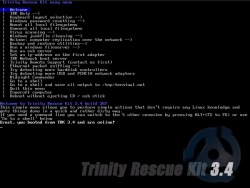Twitter Console Version 0.1

this software made by kiddies. this tool can be update status in twitter via console and look friends and waht they status..
this version 0.1 twitter console.
your comment and critical can be sent to my email or give comment here
your comment will be make this tool perfectly
source:
#!/usr/bin/python
#This tool just for fun
#thanks : mywisdom, gunslinger_, flyff666, petimati, synlord(get your honey dude :p), jimmy, whitehat and you !
#special made : devilzc0de
#email : kecoak2004@yahoo.com
#blog : http://devilz-kiddies.blogsport.com and http://kiddiescode.wordpress.com
#forum thanks : devilzc0de, jasakom, antijasakom, void-labs, and all community
#special thanks: for my lovely(verawati), you always beside me when im sad, fall and happy
import twitter
import time
#twitter connect
print """
####################################################
#~|~ o_|__|_ _._ |~ _ ._ _ _ | _ /\ '| #
# | \/\/| | | }_| |_(_)| |_\(_)|}_ \/ \/o | #
# #
# twitter console version 0.1 #
# developed by kiddies A.k.A peneter #
####################################################
"""
user_name = raw_input("please insert your username or email : ")
pass_word = raw_input("please insert your password : ")
try:
connect = twitter.api(username = user_name, password = pass_word)
print "your twitter account was connected"
print "what do you wanna do ? "
print "[1]Update your wall"
print "[2]Look your frieds wall"
choose = raw_input("coose 1 or 2 : ")
if choose == "1":
wall = raw_input("input your wall message : ")
update = connect.PostUpdate(wall)
print "your twitter wall have been updated : %s " % wall
print "Thanks for using Twitter Console"
if choose == "2":
wall_look = connect.GetFriends()
for wall in wall_look:
look = wall.screen_name + wall.status.text
time.sleep(50)
print look
else:
print "[-]Back to Main Menu"
except ImportError:
print "Please check twitter module"
print "Please check your Connection"
print "Please check your username or password, may be those invalid"














